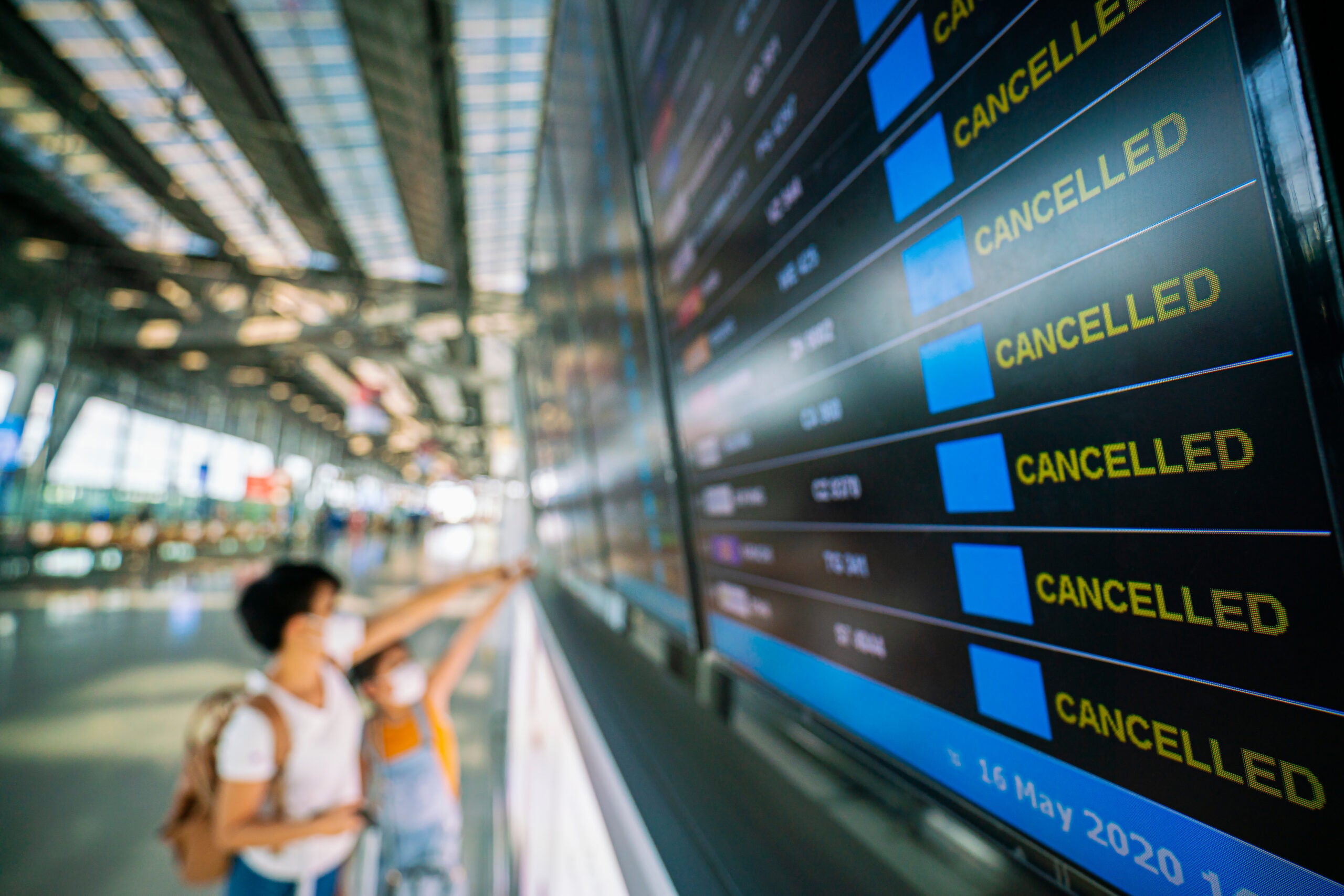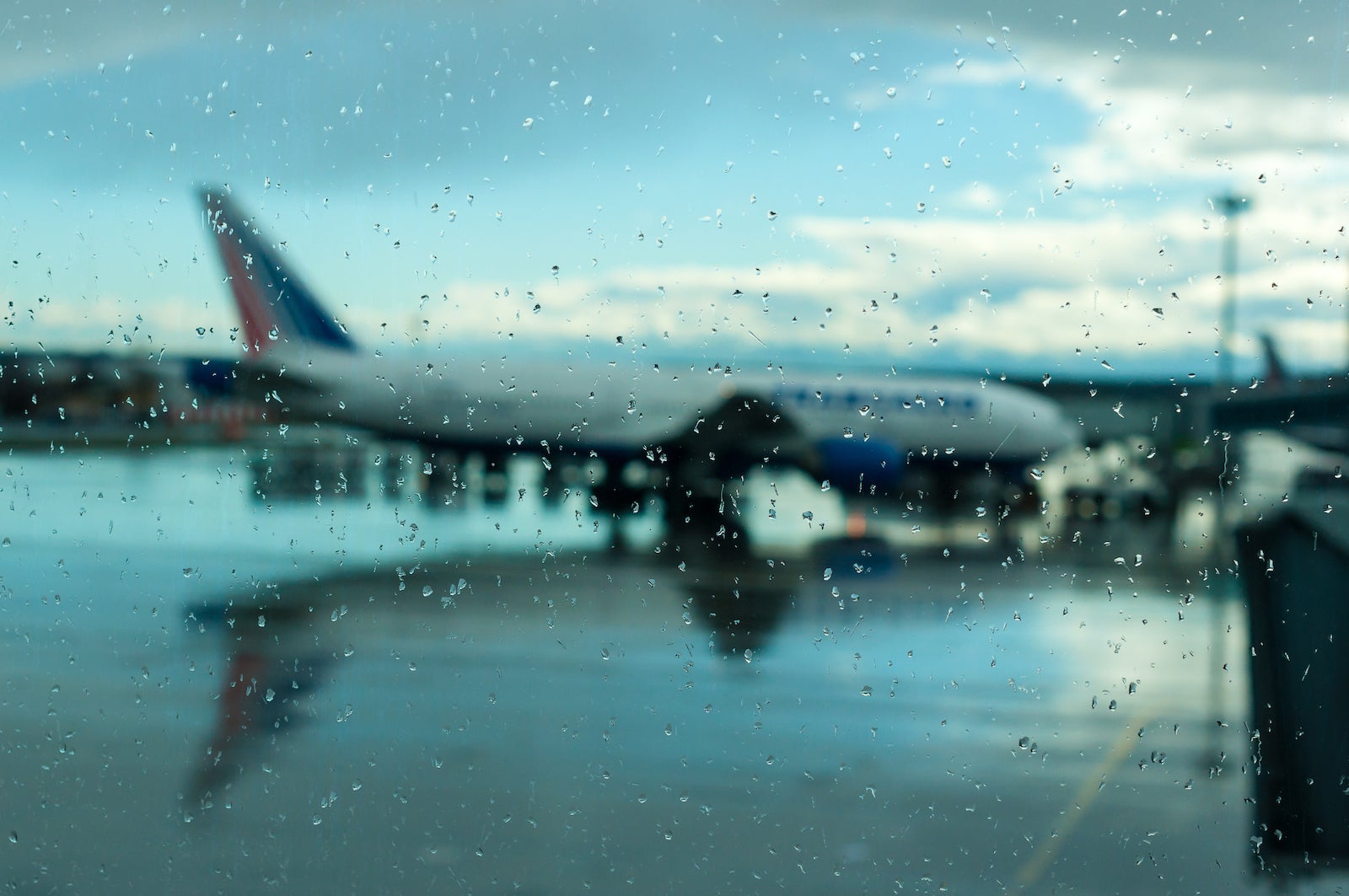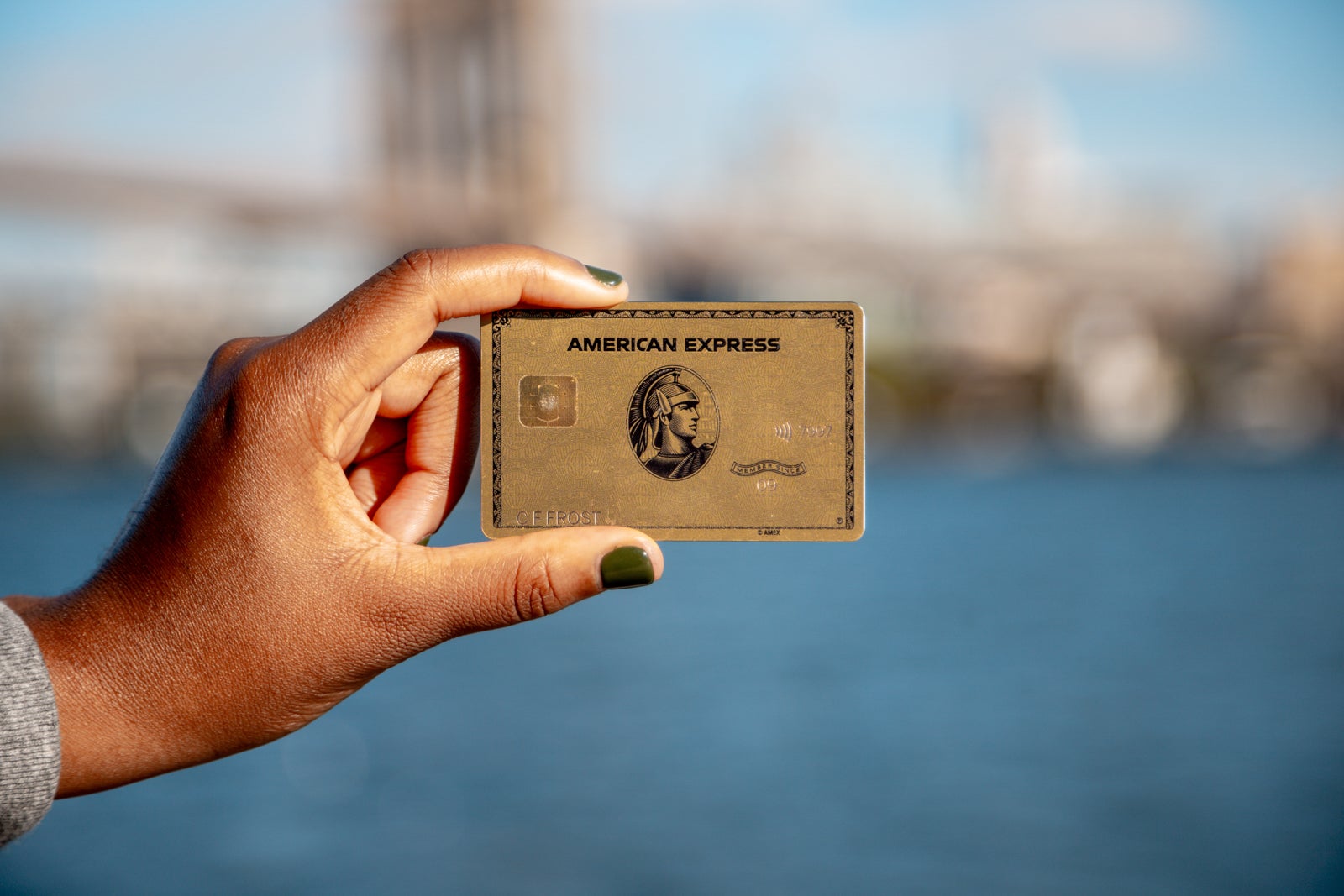Editor’s note: This is a recurring post, regularly updated with new information.
Last year, an average of over one in five flights were delayed, and about 2% were canceled. While that means most flights went out on time, millions and millions of travelers still found themselves not flying when they hoped.
Another busy travel season is upon us. When flight delays and cancellations do happen, there may not be a ton of additional seats available to simply hop on the next flight in some situations.
Here are tips on how to decrease your chances of getting stuck and increase your chances of arriving at your destination as quickly as possible, even if you get the unwelcome news that you are facing a flight delay — or worse.
How to find out if your flight might be delayed
In the current era of full flights and easily available information, don’t wait for the airline to tell you there is a problem.
You can keep an eye on general flight trends across the country on FlightAware, which gives you a good overview of how a day in the sky looks.
This page focuses on delays. Manually check the status of your flight on your airline’s website in the 24 hours leading up to travel. Also, check where the plane is coming from, if possible.

Also, opt in to flight notifications with your airline and download the carrier’s app on your phone. Here are details on that process with American Airlines and United Airlines. You’ll likely have more up-to-date flight departure information from your airline’s mobile app than what’s reflected on the airport departure and arrival boards.
You can also get flight status updates sent directly from FlightAware.
When to arrive at the airport if your flight is delayed

This can be a tricky one. If your flight is still listed as “on time” when you check the app, leave for the airport according to the original schedule.
Even if your flight shows as delayed in the app, it can be subject to change. It’s best to be at the airport ready to go at the originally scheduled time in most cases. We’ve certainly heard stories where the flight is suddenly ready to go sooner than expected, leaving some passengers behind. Sometimes you’ll receive confirmation well in advance that the flight will be significantly delayed. However, it’s safer to be at the airport, just in case.
Bad weather will sometimes cause a temporary ground stop at the airport. As soon as the weather gets better, the stop is lifted, and airlines try to get their flights off the ground ASAP.
Related: 3 things to do if your flight is delayed
What to do if there is bad weather
Monitor weather patterns starting a few days before your flight to see if any major systems are anticipated. It’s then vital to check the forecast on the night before and the day of travel to see how any issues could affect your departure and arrival airports.
Again, be sure to opt in for updates on your flight’s status. If you know bad weather is coming later in the day, ask for an earlier flight if you can. Alternatively, if you leave the night before, that’s a good idea, too.

More and more airlines are allowing travelers to change plans with no fare difference prior to severe weather problems, like impending blizzards, ice storms or even heavy thunderstorms. Some will even proactively change your flight for you.
If you know bad weather is on the horizon, either go to your airline’s website and look for an advisory notice or call the airline to talk about options. If an airline gets ahead of weather issues, you may be able to reschedule your flight by a few days in either direction with no fees. Additionally, you can try asking for a nonstop flight if the weather is putting your connecting flight in jeopardy.
However, if the airline hasn’t issued its own advisory, you could have to pay out of pocket for any fare differences if you really need to get where you are going.
Related: How the weather affects your flight — the atmosphere and winds
What to do if your flight is delayed or canceled
If a flight delay happens and you want an alternative to waiting it out, check the airline’s app or in-airport kiosk for rebooking options. You don’t have to stand in line to talk to a real person in many cases, as you can self-service the rebooking with most major airlines. In fact, it may be faster to do it online or at a kiosk in the airport — and speed matters. You may be able to rebook at a new flight time or even to a new “nearby” origin or destination city.
There are times when automated rebooking systems are not your best option, though. Sometimes, the only automated option is for a red-eye flight or a future flight heading to your destination more than two days later. That’s especially true with flights as full as they are right now.
If you can’t find what you need online, find an airline employee who knows how to work the ticketing desk. Look at their uniforms and name tags to ensure you get a ticket agent and not a baggage handler or similarly outsourced contractor.
If the U.S. call center has a long hold time (which happens during widespread issues), you can try dialing an international number for faster service. You might also find success reaching out to an airline on Twitter, via chat or other social media channels when customer service lines are busy.
For example, when the first leg of an American Airlines flight from New York City to Arkansas just before Christmas was delayed, TPG editor Madison Blancaflor missed her connection.
She reached out to American Airlines on Twitter to help ensure she was rebooked on the earliest possible flight. She still had to endure a long layover in Charlotte, but it was better (and less stressful) than rushing to the customer service desk to try and rebook upon arrival in Charlotte.
If there are no reasonable booking options left with your carrier, ask if there are options on another airline. If the delay is weather-related, and you are on a basic-economy ticket or are flying on a low-cost carrier, there might not be other airline options at your fingertips. Still, it’s worth asking and — if possible — presenting available options you have researched yourself.
Related: Top tips to get through to airline customer service faster
Retreat to a lounge
If you have airline club access at a United Club, Delta Sky Club or similar, you can head there for help from experienced agents with potentially shorter lines. Use it as a spot to gather your thoughts, charge your phone and make level-headed decisions. The agents there might be able to help you change or track your flight.
In third-party lounges, such as an American Express Centurion Lounge, you won’t be able to get that type of airline-specific assistance, but you’re still probably in a better spot to wait out the storm than in a crowded terminal.
Related: Best credit cards for airport lounge access
Rebook your flight
Sometimes, if you really need to get home, you may need to do the work and layout for the expenditure for a new flight yourself.
During a delay while traveling from Orlando to Houston when my original carrier couldn’t get me home for more than 24 hours after my initial flight was canceled, I found a nonstop Southwest Airlines flight with one last seat available for $463.
Even though rebooking yourself will not typically be covered by any insurance or carrier, I went for the Southwest option and got my original United ticket refunded, which at least offset some of the pain of a new ticket. In my case, it was worth controlling my own destiny and not being stuck.
Your credit card’s built-in trip delay or trip cancellation coverage can help with many unexpected expenses in the face of delays and cancellations, but a brand-new flight home isn’t likely to be one of them. Still, in some cases, it may be the only way home for a while, so you’ll have to weigh the pros and cons.
Related: When to buy travel insurance vs. when to rely on credit card protections
Check airport hotels
While thinking through what to do in case of a flight delay or cancellation, consider your options at airport hotels, which can fill up if there are major delays and cancellations. Sometimes, it is best to pull the plug on getting home that day, get some good rest and try again in the morning.
Airport hotels are generally pretty affordable on points, although cash rates can skyrocket when demand surges. Accommodations are typically covered by trip delay protection, offered by cards like the Chase Sapphire Reserve and The Platinum Card® from American Express.*
* Eligibility and benefit level vary by card. Terms, conditions and limitations apply. Please visit americanexpress.com/benefitsguide for more details. Underwritten by New Hampshire Insurance Company, an AIG Company.

Show up early for standby flights
If you know in advance that your flight is canceled or delayed, heading to the airport early could score you a same-day standby flight that gets you to your destination early.
For example, a TPG staffer was able to use this strategy to avoid getting stuck overnight when a hiccup with his flight from Austin to New York City would have caused him to miss a connection in Dallas. Since he had A-List status with Southwest, he showed up at the airport a bit earlier and did a free same-day standby onto an earlier flight that connected to a different city. His A-List status bumped him to the top of the standby list and onto the flight.
Getting on the standby list isn’t a foolproof method, especially if the earlier flight is almost full. This is a case where having elite status can help since you’ll have priority over non-elite travelers. Additionally, some airlines charge a fee for non-elite travelers to get on the standby list for an earlier flight.
Related: Best credit cards for airline elite status
How to get a refund or flight compensation
If you decide not to fly your originally scheduled flight in light of major delays and cancellations, get your money or points back. Do not settle for an airline voucher that may be hard to use and eventually expire.
You may have a cancel-and-refund option available to you online or in the airline’s app. If not, you can ask an airline employee for assistance in person or over the phone. Just be sure to cancel your original flight before its eventual departure so you can get the money or miles (hopefully) returned.
Know your rights and take stock of your credit card protections. You’ll have to read some fine print, but you may be entitled to accommodations, credits or expense reimbursement by the airline or from your credit card (usually depending on the length of your delay and the reason for delay or cancellation).
Many travel credit cards offer trip delay insurance that can save you money when you’re stuck somewhere. While it won’t help you avoid cancellations or delays, it could help you cover expenses while you wait for your flight.
Related: You are entitled to a refund for your canceled flight — even if the airline says you aren’t
Cards that provide travel protection

There are many rewards credit cards that help confer valuable travel protections when you do have a delayed or canceled flight (if you used them to book your flight). Below are just a few examples of cards that provide some built-in coverage:
Chase Sapphire Reserve: Provides a $300 annual travel credit, up to $20,000 in trip cancellation coverage, up to $75,000 in car rental coverage, trip delay benefits of up to $500 per person that kick in starting at a six-hour delay and more.
Chase Sapphire Preferred Card: The Chase Sapphire Preferred includes trip cancellation and interruption insurance, trip delay reimbursement, emergency assistance services and more.
American Express Platinum: In addition to the extensive lounge benefits and up to $200 in annual airline fee credits, the Platinum card also provides trip cancellation and interruption insurance for up to $20,000 of a covered trip and incident.
Make a decision
Last but not least, we don’t recommend being too indecisive in the face of delays and cancellations. If you are, expect your options to dwindle. Once you finally decide to wait it out or try and switch flights, you will be at the mercy of whatever options the airline has to offer … which may not be great.
As you wait, flight options are likely to disappear as hundreds (or thousands) of other passengers beat you to rebooking. Weigh your realistic options and make a quick decision if you want to keep some control of your schedule.
If you’re OK getting stuck somewhere for a bit or taking a creative route home, waiting for the airline to direct you is a feasible option. Just don’t stress about your decision once you make it.
Your credit card’s built-in travel protections may cover unexpected expenses not covered by the airline (such as a hotel for an overnight weather delay, though not a new flight) if you get stuck during your journey.
In my Orlando example, my original flight was stuck in Denver with a five-hour weather delay, so the odds of that flight getting me where I needed to be that day didn’t seem great. When I didn’t clear standby on the other United flight to Houston from Orlando that night, I made a decision and stuck with it.
I left the terminal and headed to my new Southwest flight in another terminal (Clear and PreCheck helped with that quick transition). Yes, that choice cost me a new flight home, but I had to make that call right then or roll the dice on my United flight making it out that day.
I wasn’t in a gambling mood when it came to getting home, and I understood the out-of-pocket implications.

Bottom line
Most of the time, your flight will get you where you need to be close to when you want to be there. Still, flight delays and cancellations happen.
If your flight is delayed by an hour or two, there’s not usually much to do other than be patient. However, when facing a long delay or cancellation, it’s good to have a plan to reduce the odds of getting stuck.
Given the common theme of full passenger loads on flights these days, acting quickly, researching options and making a speedy decision will put you ahead of the pack.
Related: Best credit cards that offer trip delay reimbursement
Additional reporting by Melissa Klurman, Kristy Tolley, Victoria Walker, Madison Blancaflor, Benji Stawski and Benét J. Wilson.



